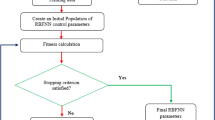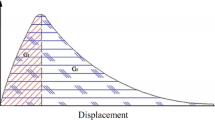Abstract
The factors affecting performance of fractured wells are analyzed in this work. The static and dynamic geologic data of fractured well and fracturing treatment parameters obtained from 51 fractured wells in sand reservoirs of Zhongyuan oilfield are analyzed by applying the grey correlation method. Ten parameters are screened, including penetrability, porosity, net thickness, oil saturation, water cut, average daily production, and injection rate, amount cementing front spacer, amount sand-carrying agent and amount sand. With the novel Radial Basis Function neural network model based on immune principles, 13 parameters of 42 wells out of 51 are used as the input samples and the stimulation ratios as the output samples. The nonlinear interrelationship between the input samples and output samples are investigated, and a productivity prediction model of optimizing fracture design is established. The data of the rest 7 wells are used to test the model. The results show that the relative errors are all less than 7%, which proves that the novel Radial Basis Function neural network model based on immune principles has less calculation, high precision and good generalization ability.
Similar content being viewed by others
References
Liu H, Zhao J Z, Hu Y Q, et al (2004) Study on application of support vector machine for repetitive fracturing. Natural Gas Industry 3: 75–77
Liu H, Zhao J Z, Hu Y Q, et al (2002) Post-frac effect forecasting using the fuzzy neural network. Fault-block Oil & Gas Field 3: 35–38
Liu H, Zhao J Z, Hu Y Q, Zhang S L, Liu Y J (2002) Application of the fuzzy neural network system in the selection of wells or layers for fracturing. Drilling & Production Technology 5: 34–37
Huang Z W (2009) Hydraulic fracturing evaluation methods and analysis of objectives. Inner Mongolia Petrochemical Industry 14: 43–45
Gomm J B, Ding L Y (2000) Selecting radial basis function network centers with recursive orthogonal least squares training. IEEE Trans. Neural Networks 11(2): 306–314
Liu Z Y, Lv H J, Cheng L J (2002) A novel RBF neural network and its application in thermal processes modeling. Proceedings of the Chinese Society for Electrical Engineering 22(9): 5–9
Zhou Y, Zheng D L, Qiu Z L et al (2004) An application of a coupled algorithm by the artificial immune and RBF Network. Computer Engineering and Applications, 40(1): 39–40
Castro L, Nunes de, Fernando J, Von Zuben (2000) An evolutionary immune network for data clustering. In Proceedings of the IEEE SBRN (Brazilian Symposium on Artificial Neural Networks), Rio deJaneiro: 84–89
Author information
Authors and Affiliations
Corresponding author
About this article
Cite this article
Liu, H., Huang, Z., Gao, Hy. et al. Optimizing fracture design based on a novel RBF neural network. Fuzzy Inf. Eng. 3, 23–33 (2011). https://doi.org/10.1007/s12543-011-0063-z
Received:
Revised:
Accepted:
Published:
Issue Date:
DOI: https://doi.org/10.1007/s12543-011-0063-z




